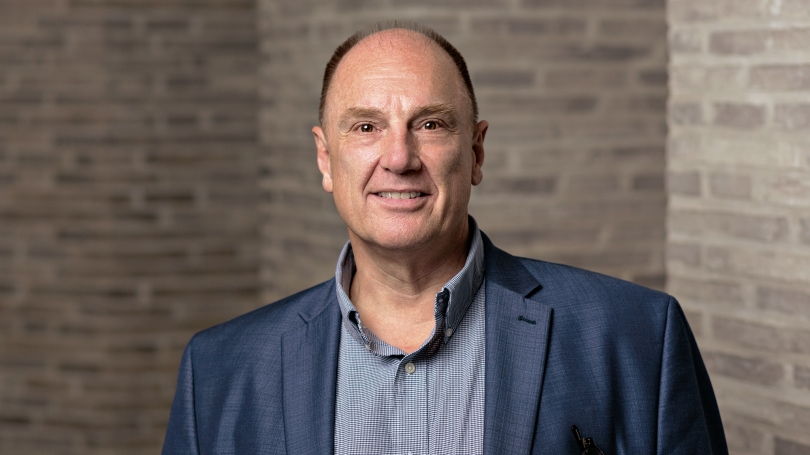LOOKING FORWARD
John R. Stomberg, Virginia Rice Kelsey 1961s Director
Hood Quarterly, fall 2021
Every reopening these days is another positive sign. The Hood Museum's reopening was likewise an important signifier of this special time. That one simple act—inviting the public back into our galleries—speaks volumes about where we have been and where we are headed. Some of the spaces in our galleries still echo the demands of pandemic life, such as wide gaps between works of art, but others have been installed with the new now in mind. The time has finally arrived when we can collectively look forward. We know that our lives are returning. We also know that we will not be going back to the world of "before." It is for this moment that we at the Hood Museum—along with people around the world—have been preparing. It is time and we are ready.
But for what?
Refined goals, new measures for success, and a renewed commitment to both the people we serve and those with whom we work.
We have long believed that what makes this museum special is our commitment to deep engagements with art for relatively small audiences. Now we want to double down on this goal and take advantage of the opportunities such a philosophy offers. That might mean eight undergraduates and their professor in the Bernstein Center for Object Study or fifteen people enjoying an afternoon gallery talk or the visit of twenty fourth graders with their teacher. It also extends to those in the community and travelers to the Upper Valley who are rewarded by beautifully installed and brilliantly interpreted presentations of the collections. Our goal at the Hood Museum can be characterized by the mantra "fewer, better"—fewer works of art on view in our galleries due to our size and fewer large-scale exhibitions, perhaps, but also better art and better shows.
We want to surprise and delight our visitors by virtue of the depth of our audience engagement, by the meaningful experiences that come from a visit, and by the array of great works on view. This ethos penetrates all we do. We anticipate slow interactions with art in our galleries. We write text with the hope that—for those who wish it—a process evolves during a visit here. Looking, reading, contemplating, looking again. This is the process we strive for throughout our programs. But how to measure success? Surely attendance figures alone will not reflect whether we have successfully achieved our loftier goals. For that we require anecdotes from our visitor services guides in the galleries, our curators and educators in the object-study center, and our area teachers and Dartmouth professors. Despite this existing circle of "call and response," we are moving toward more rigorous and formal evaluation of our work to help guide us toward the provision of ever more meaningful encounters with art.
Finally, we look to introduce the idea of "care" into all we do—care for the artist, care for the visitor, care for the student, the teacher, and the colleague. While we have always considered ourselves ethical actors, it is time for us to articulate this behavior as a steadfast and constant commitment. This involves a shift. We have traditionally placed the objects in our care at the center of our orbit, whereas now, without lowering our level of care, we want to center our practice on people. We move to understand better not just what our intentions are but what our impacts are on the people with whom we connect.
And for all these reasons, we look to the future optimistically, energized by our time spent reconsidering the enormous possibilities that await us in the coming years and prepared to seize them. We welcome your thoughts along the way. Drop us an email, talk with a guide, send me a letter. I am eager to reconnect and grateful that you are with us for this next chapter in the life of the Hood Museum.
